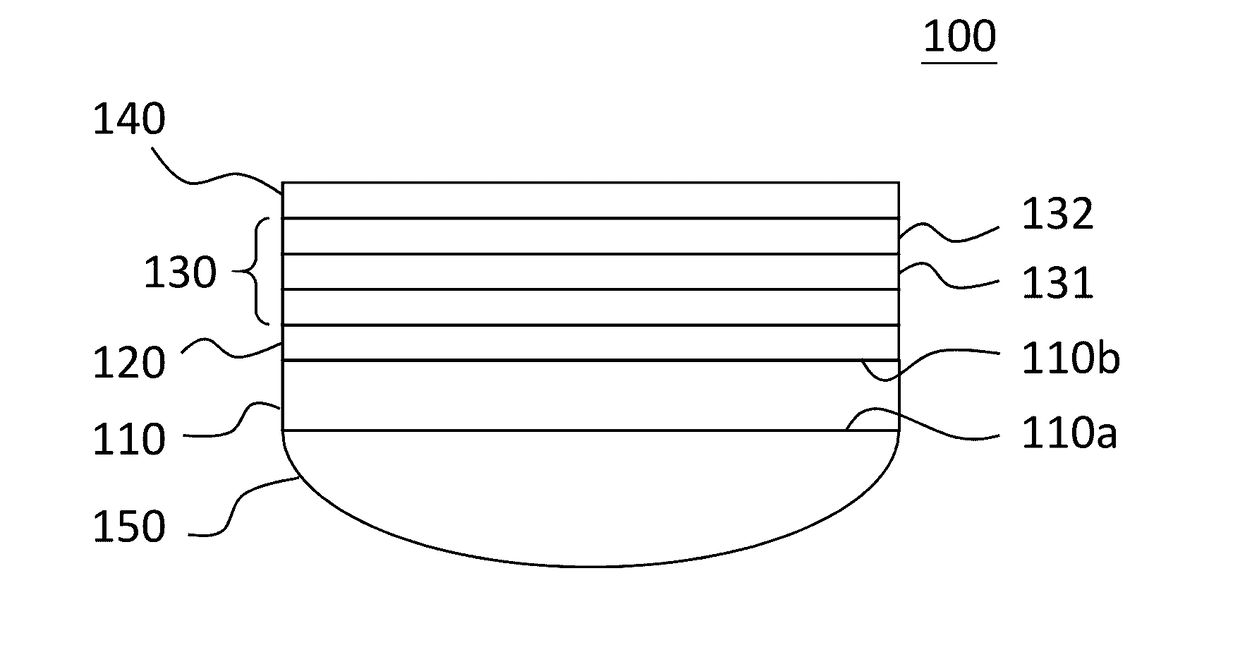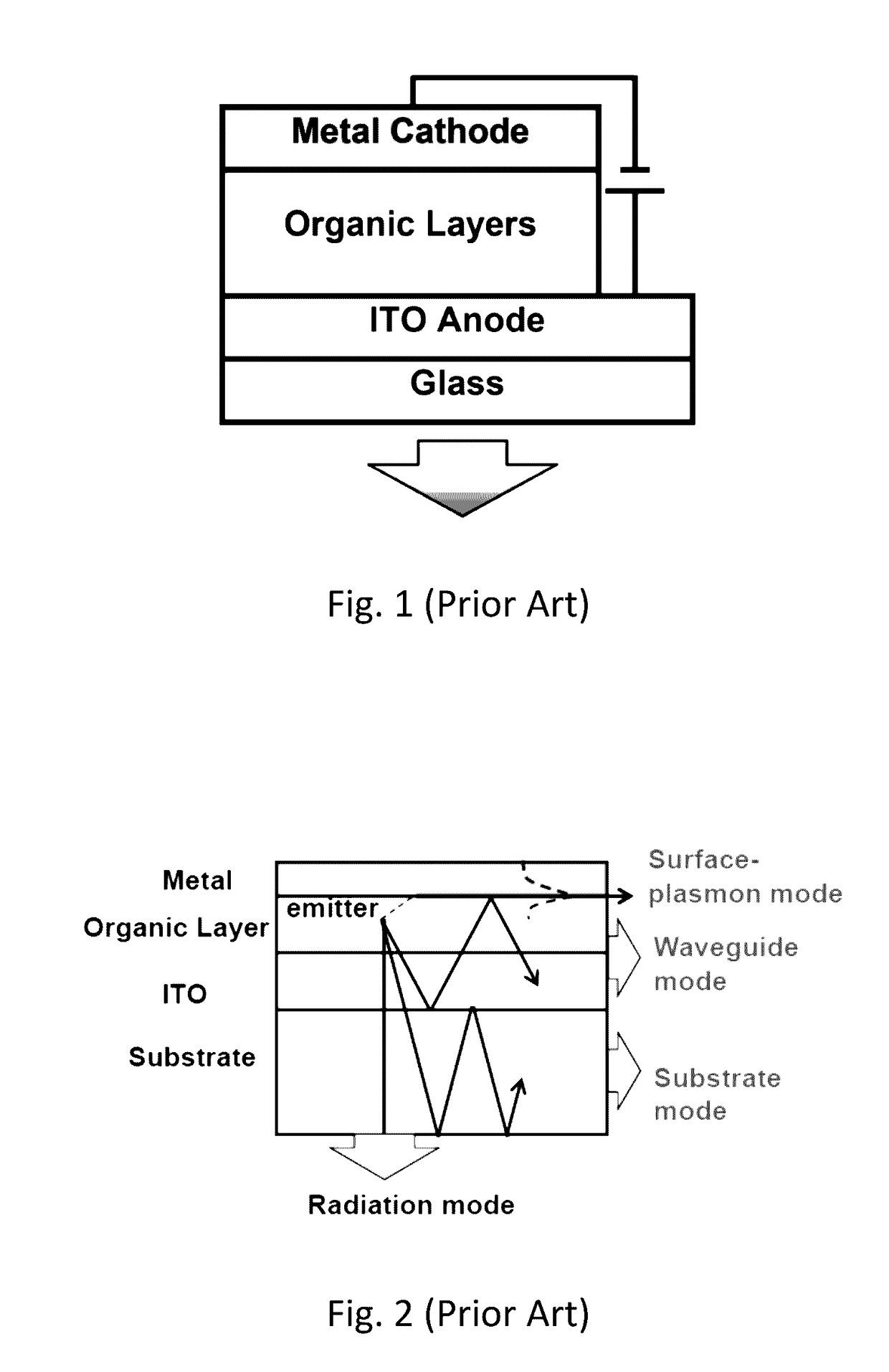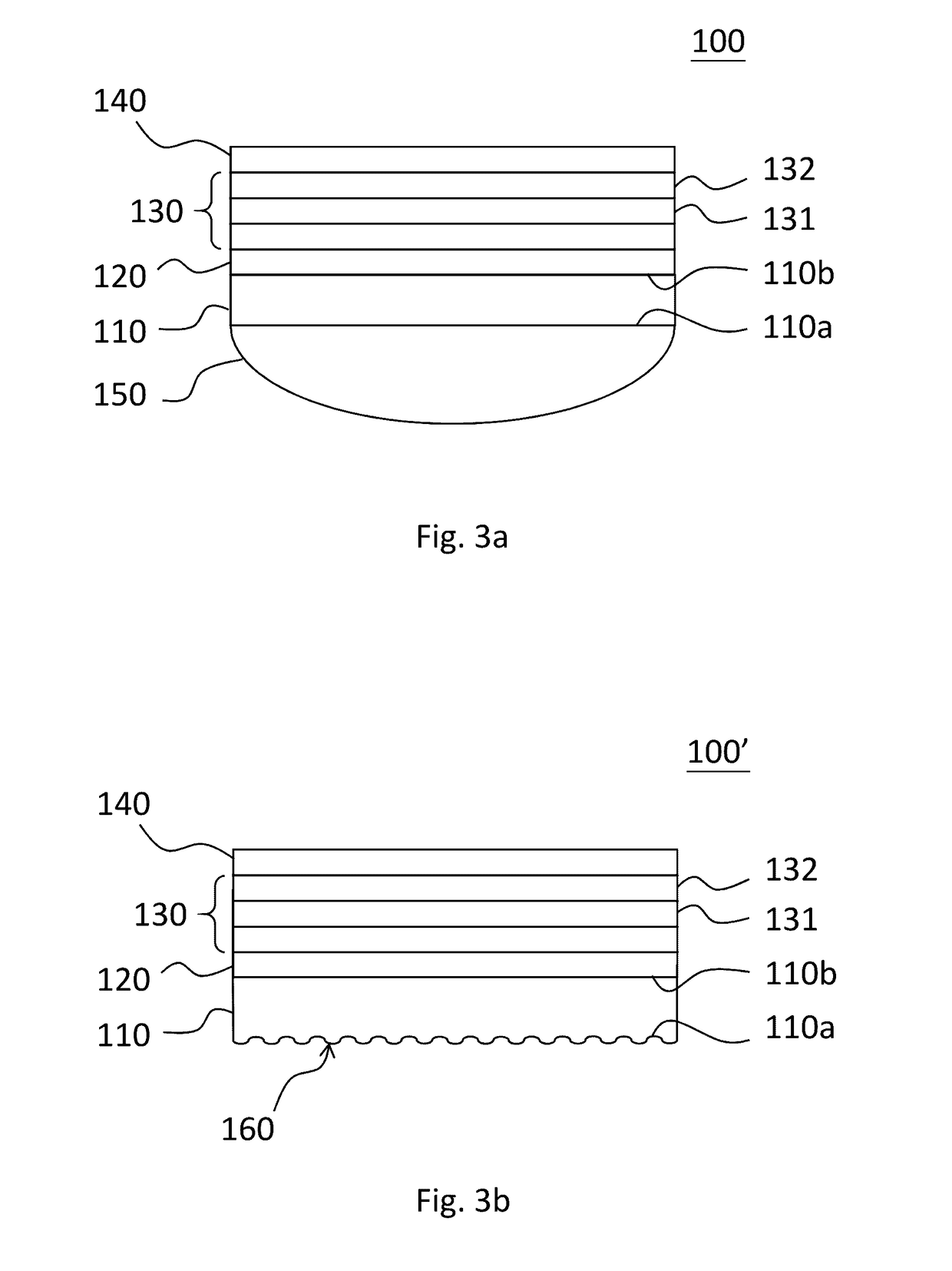Electroluminescent device
a technology of electroluminescent devices and el, which is applied in the direction of basic electric elements, semiconductor devices, electrical equipment, etc., can solve the problems of optical out-coupling of oled internal emission to air, and achieve the effect of high optical out-coupling efficiency and external quantum efficiency
- Summary
- Abstract
- Description
- Claims
- Application Information
AI Technical Summary
Benefits of technology
Problems solved by technology
Method used
Image
Examples
embodiment of invention — example 1
Embodiment of Invention—Example 1
[0044]In one possible embodiment of this invention, the low-index transparent electrode (the first electrode) could be a transparent conducting polymer poly(3,4-ethylenedioxythiophene):poly(styrenesulfonate) (PEDOT:PSS) with sufficient conductivity. The conducting polymer poly(3,4-ethylenedioxythiophene):poly(styrenesulfonate) (PEDOT:PSS) has been attractive due to its excellent mechanical flexibility, good transmittance and conductivity, solution processing capability, and low cost. With a conductivity almost comparable to that of ITO, high-conductivity PEDOT:PSS can be used as transparent electrodes for organic optoelectronic devices. PEDOT:PSS possesses optical properties (e.g., refractive index, n˜1.5) rather different from those of the widely used transparent conductor ITO (n˜1.9-2.1) and typical organic layers (n˜1.7-1.9).
[0045]Here, we conducted comprehensive theoretical and experimental comparisons on OLEDs adopting either the conventional hi...
embodiment of invention — example 2
Embodiment of Invention—Example 2
[0063]Following the general principles of the preceding embodiment example, there could be different variations and modifications of the embodiment.
[0064]For instance, in addition to the low-index transparent electrode PEDOT:PSS in example 1, other possible low-index transparent conductors (preferentially with a refractive index <1.7) include nanoporous indium tin oxide, nanoporous fluorine-doped tin oxide, nanoporous aluminum zinc oxide, nanoporous gallium zinc oxide, nanoporous tin oxide, nanoporous niobium-doped titanium oxide, their combinations, and their stacking.
embodiment of invention — example 3
Embodiment of Invention—Example 3
[0065]For instance, the out-coupling lens attached to the substrate in example 1 may be replaced with other out-coupling optical element adjacent to the outer surface of the substrate, such as a prism, a pyramid, a hemisphere lens, a macrolens sheet, a microlens sheet, a micro-prism sheet, a micro-pyramid sheet, a micro-particle layer, a nano-particle layer, a microporous layer, a nanoporous layer, a grating sheet, a scattering sheet, a diffuser sheet, arrays of pores, arrays of crevices, arrays of air bubbles, arrays of vacuum pores etc.
PUM
 Login to View More
Login to View More Abstract
Description
Claims
Application Information
 Login to View More
Login to View More - R&D
- Intellectual Property
- Life Sciences
- Materials
- Tech Scout
- Unparalleled Data Quality
- Higher Quality Content
- 60% Fewer Hallucinations
Browse by: Latest US Patents, China's latest patents, Technical Efficacy Thesaurus, Application Domain, Technology Topic, Popular Technical Reports.
© 2025 PatSnap. All rights reserved.Legal|Privacy policy|Modern Slavery Act Transparency Statement|Sitemap|About US| Contact US: help@patsnap.com



